Entry Database : PDB / ID : 1uhlTitle Crystal structure of the LXRalfa-RXRbeta LBD heterodimer 10-mer peptide from Nuclear receptor coactivator 2 Oxysterols receptor LXR-alpha Retinoic acid receptor RXR-beta Keywords / Function / homology Function Domain/homology Component
/ / / / / / / / / / / / / / / / / / / / / / / / / / / / / / / / / / / / / / / / / / / / / / / / / / / / / / / / / / / / / / / / / / / / / / / / / / / / / / / / / / / / / / / / / / / / / / / / / / / / / / / / / / / / / / / / / / / / / / / / / / / / / / / / / / / / / / / / / / / / / / / / / / / / / / / / / / / / / / / / / / / / / / / Biological species Homo sapiens (human)Method / / / Resolution : 2.9 Å Authors Svensson, S. / Ostberg, T. / Jacobsson, M. / Norstrom, C. / Stefansson, K. / Hallen, D. / Johansson, I.C. / Zachrisson, K. / Ogg, D. / Jendeberg, L. Journal : Embo J. / Year : 2003Title : Crystal structure of the heterodimeric complex of LXRalpha and RXRbeta ligand-binding domains in a fully agonistic conformationAuthors : Svensson, S. / Ostberg, T. / Jacobsson, M. / Norstrom, C. / Stefansson, K. / Hallen, D. / Johansson, I.C. / Zachrisson, K. / Ogg, D. / Jendeberg, L. History Deposition Jul 3, 2003 Deposition site / Processing site Revision 1.0 Jun 1, 2004 Provider / Type Revision 1.1 Apr 27, 2008 Group Revision 1.2 Jul 13, 2011 Group Revision 1.3 May 23, 2018 Group / Category / Item Revision 1.4 Oct 25, 2023 Group Data collection / Database references ... Data collection / Database references / Derived calculations / Refinement description Category chem_comp_atom / chem_comp_bond ... chem_comp_atom / chem_comp_bond / database_2 / pdbx_initial_refinement_model / struct_ref_seq_dif / struct_site Item _database_2.pdbx_DOI / _database_2.pdbx_database_accession ... _database_2.pdbx_DOI / _database_2.pdbx_database_accession / _struct_ref_seq_dif.details / _struct_site.pdbx_auth_asym_id / _struct_site.pdbx_auth_comp_id / _struct_site.pdbx_auth_seq_id
Show all Show less
 Open data
Open data Basic information
Basic information Components
Components Keywords
Keywords Function and homology information
Function and homology information Homo sapiens (human)
Homo sapiens (human) X-RAY DIFFRACTION /
X-RAY DIFFRACTION /  SYNCHROTRON /
SYNCHROTRON /  MOLECULAR REPLACEMENT / Resolution: 2.9 Å
MOLECULAR REPLACEMENT / Resolution: 2.9 Å  Authors
Authors Citation
Citation Journal: Embo J. / Year: 2003
Journal: Embo J. / Year: 2003 Structure visualization
Structure visualization Molmil
Molmil Jmol/JSmol
Jmol/JSmol Downloads & links
Downloads & links Download
Download 1uhl.cif.gz
1uhl.cif.gz PDBx/mmCIF format
PDBx/mmCIF format pdb1uhl.ent.gz
pdb1uhl.ent.gz PDB format
PDB format 1uhl.json.gz
1uhl.json.gz PDBx/mmJSON format
PDBx/mmJSON format Other downloads
Other downloads 1uhl_validation.pdf.gz
1uhl_validation.pdf.gz wwPDB validaton report
wwPDB validaton report 1uhl_full_validation.pdf.gz
1uhl_full_validation.pdf.gz 1uhl_validation.xml.gz
1uhl_validation.xml.gz 1uhl_validation.cif.gz
1uhl_validation.cif.gz https://data.pdbj.org/pub/pdb/validation_reports/uh/1uhl
https://data.pdbj.org/pub/pdb/validation_reports/uh/1uhl ftp://data.pdbj.org/pub/pdb/validation_reports/uh/1uhl
ftp://data.pdbj.org/pub/pdb/validation_reports/uh/1uhl
 Links
Links Assembly
Assembly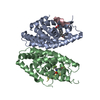
 Components
Components Homo sapiens (human) / Plasmid: pET15 / Species (production host): Escherichia coli / Production host:
Homo sapiens (human) / Plasmid: pET15 / Species (production host): Escherichia coli / Production host: 
 Homo sapiens (human) / Plasmid: pET28 / Species (production host): Escherichia coli / Production host:
Homo sapiens (human) / Plasmid: pET28 / Species (production host): Escherichia coli / Production host: 
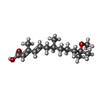




 X-RAY DIFFRACTION / Number of used crystals: 1
X-RAY DIFFRACTION / Number of used crystals: 1  Sample preparation
Sample preparation SYNCHROTRON / Site:
SYNCHROTRON / Site:  MAX II
MAX II  / Beamline: I711 / Wavelength: 1.11 Å
/ Beamline: I711 / Wavelength: 1.11 Å Processing
Processing MOLECULAR REPLACEMENT
MOLECULAR REPLACEMENT Movie
Movie Controller
Controller



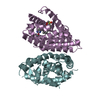
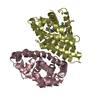
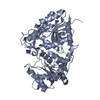
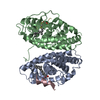
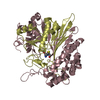
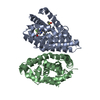
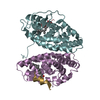
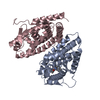
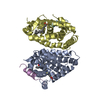
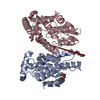
 PDBj
PDBj













